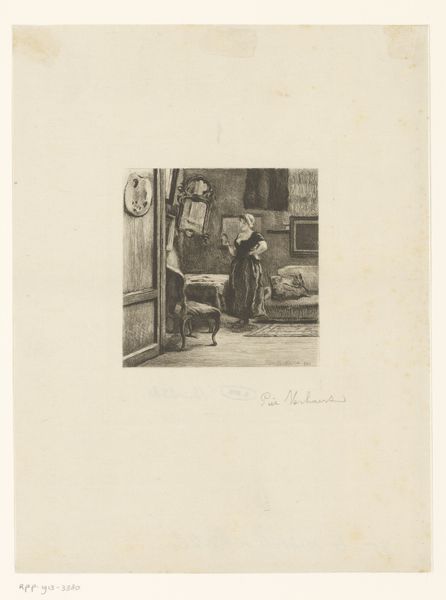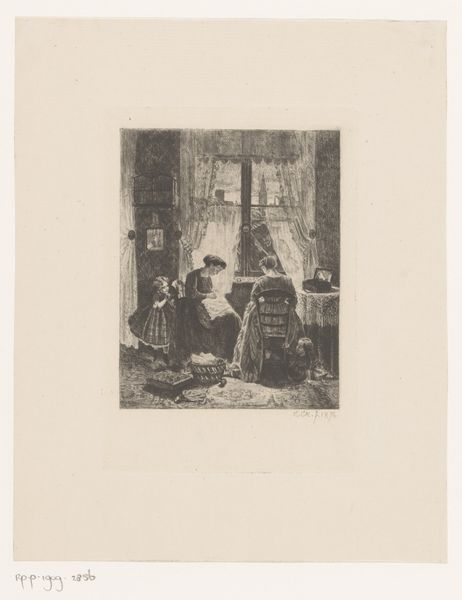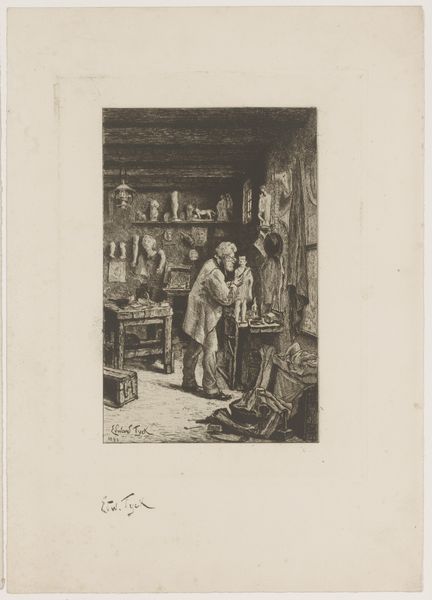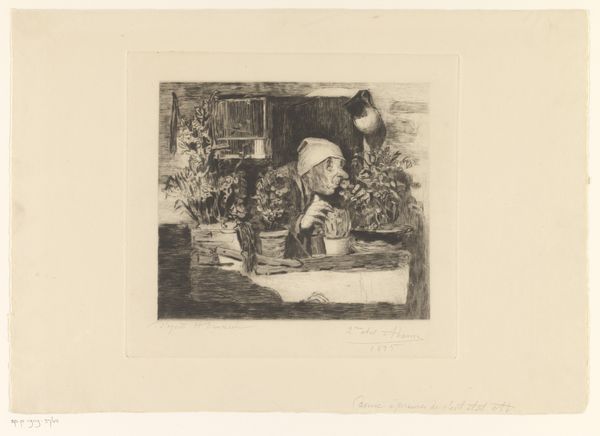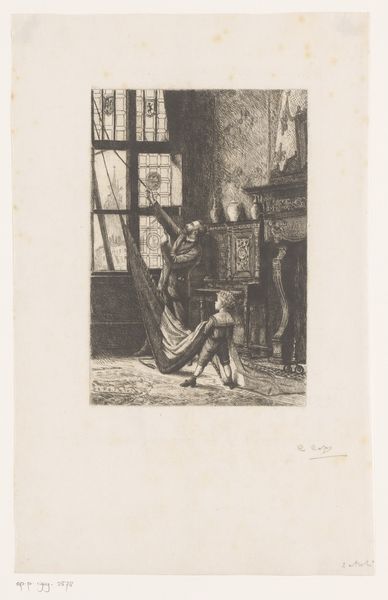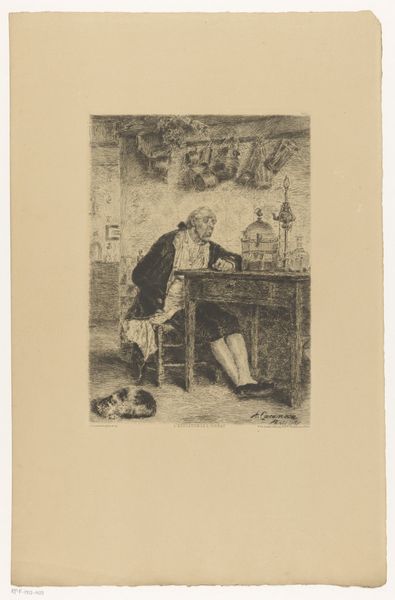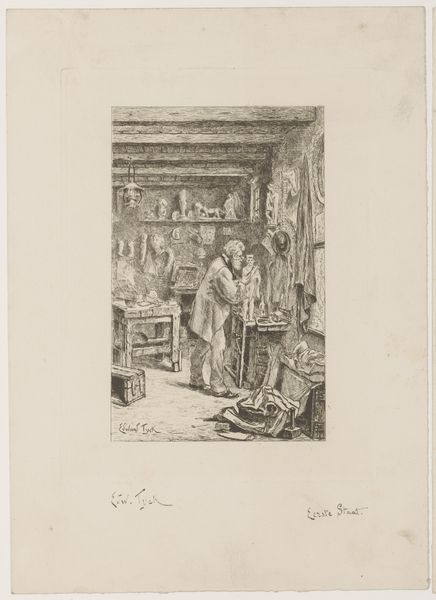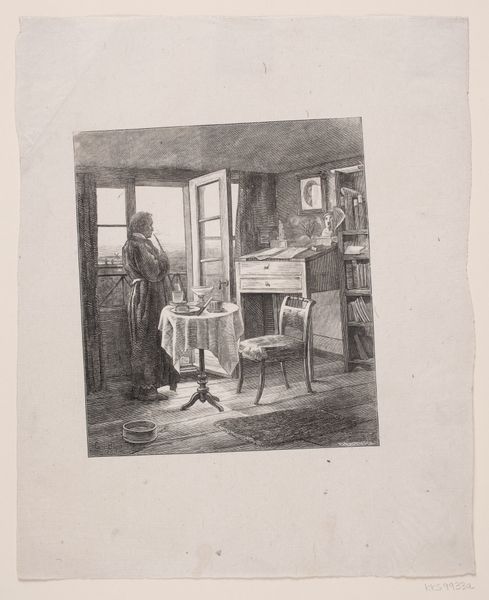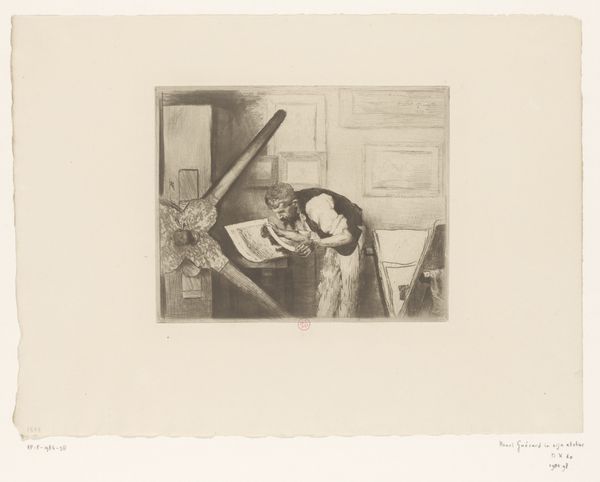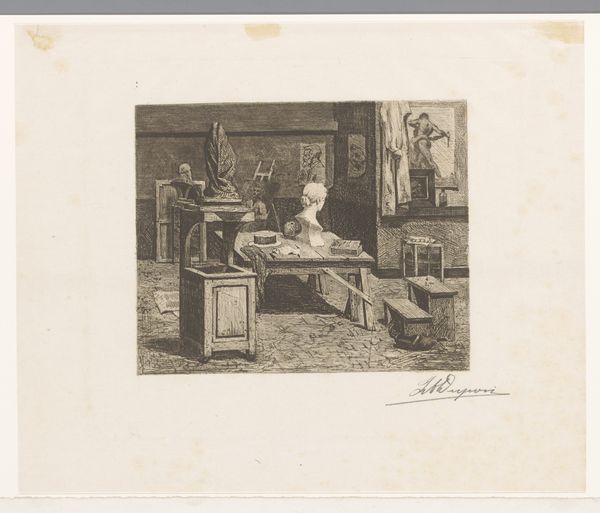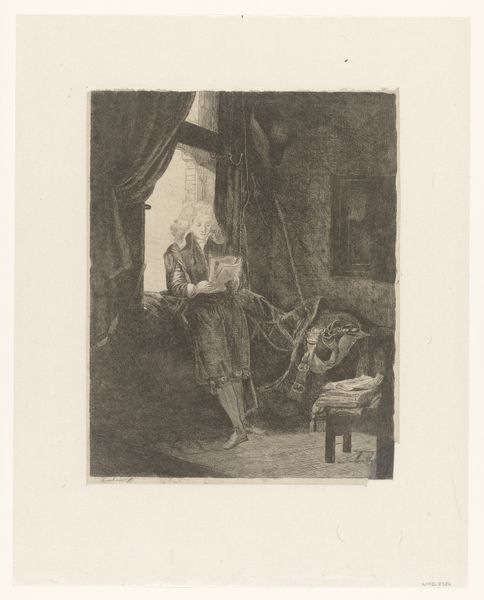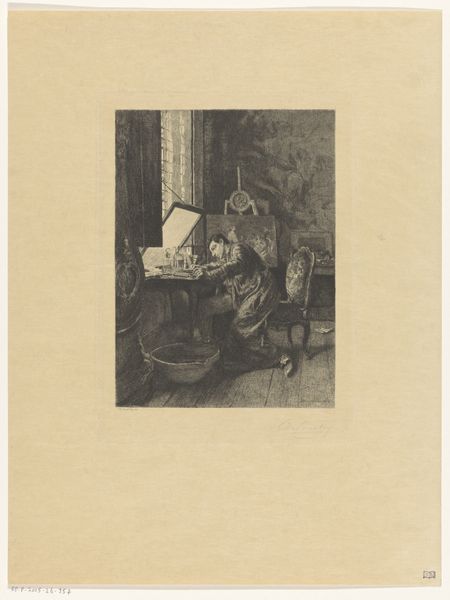
drawing, print, etching
#
portrait
#
pencil drawn
#
photo of handprinted image
#
drawing
#
aged paper
#
light pencil work
#
16_19th-century
# print
#
etching
#
pencil sketch
#
old engraving style
#
archive photography
#
genre-painting
#
history-painting
#
academic-art
#
realism
Dimensions: height 195 mm, width 140 mm
Copyright: Rijks Museum: Open Domain
Editor: This etching, "Etser in zijn atelier" by Auguste Danse, dates back to 1877. There's something incredibly intimate about the scene; a figure seems to be resting, perhaps exhausted, amidst the tools of their craft. What do you see in this piece, beyond just a genre scene? Curator: I see a powerful commentary on the role of the artist within a rapidly industrializing society. The artist, hunched over their work, appears almost defeated. Consider the social context: the late 19th century was a period of immense upheaval, with traditional crafts being replaced by mechanization. Could this image be interpreted as a visual representation of the anxieties surrounding artistic labor during this time? How does the artist position himself in relation to this change? Editor: That's a compelling point. It makes me think about the tension between the romanticized ideal of the artist and the realities of making a living. Do you think the artist is critiquing this tension? Curator: Absolutely. Notice the framed paintings on the wall. They seem to represent the kind of art the etcher is laboring to produce. Is the act of replicating artwork itself an indictment of capitalist notions of originality? What do we make of the labor involved when artworks become another kind of commodity? How does understanding the gender of the etcher, most likely male, also reinforce prevailing Victorian norms around male labour and artistic pursuit? Editor: I hadn't considered the act of replication as a form of critique. Thinking about the work in that light, makes me look at the image in an entirely different way. Thank you! Curator: It's precisely through these intersectional readings, bridging art history and social context, that we can unlock deeper understandings of artworks like this, beyond a simple snapshot of a 19th century artist’s studio.
Comments
No comments
Be the first to comment and join the conversation on the ultimate creative platform.
